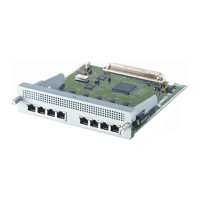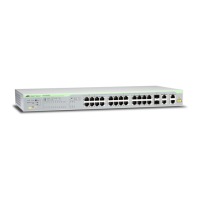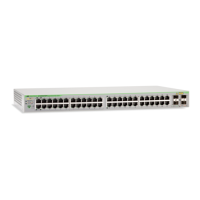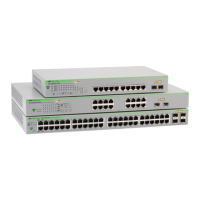Introduction DHCP Architecture
Software Reference for SwitchBlade x3100 Series Switches (Network Management)
7-2
7.2 Dynamic Host Configuration Protocol (DHCP)
This section provides an overview of the DHCP functions, an example configuration, and a reference list of the
DHCP commands.
The SBx3112 switch uses the following DHCP functions:
• DHCP Relay Agent - relays DHCP messages between clients and servers on different IP networks, thereby
avoiding the need to install and run a DHCP server on every IP network segment (subnet).
• DHCP Relay Relay Mode - configures DHCP clients and server on different networks.
• DHCP Relay Snooping Mode - configures DHCP clients and server on the same network.
• Auto-Ageing and IP Filter Removal - provides support for the option to remove the DHCP IP address when
aged out as well as the optional IP filter for any or all customer interfaces based on the lease time in the
DHCP ACK packet.
• DHCP Relay TR-101 Support - provides formal TR-101 support to the DHCP Relay Agent.
7.2.1 DHCP Architecture
DHCP provides a mechanism through which IP hosts can obtain protocol configuration parameters automati-
cally through the network. Configuration parameters can include an IP address, the subnet mask, the default
gateway, the lease time for the host, or other DHCP options.
Note: To help minimize the processor resources that would be needed to renew short lease times, the
system adds five minutes to every lease time.
DHCP is based on a client-server model in which a client contacts a server to obtain its configuration parame-
ters. The server is normally centrally located in the network and is maintained by the administrator of that net-
work. Since each client requires an IP address to communicate with other clients in an IP network, DHCP eases
the administrative burden of manually configuring each client with an IP address. In addition, if a client moves,
DHCP manages its ability to obtain another IP address.
Normally a client is allocated an IP address from its subnet group. Since DHCP messages are sent as broadcast
messages (at both at Layer 2 and 3), this requires a DHCP server to be located on each subnet. The DHCP
Relay Agent function allows the Allied Telesis system to intercept the broadcast DHCP messages and forward
the messages as unicast to the appropriate server(s).
The network illustrated in Figure 7-1 shows two subnets with Allied Telesis systems configured as DHCP relay
agents, a router, and a single DHCP server (instead of individual DHCP servers in each subnet). Since the
server is allocating IP addresses to clients on many subnets without actually being connected to each of these
subnets, it must have knowledge of which subnets the clients are on in order to allocate an IP address to a cli-
ent. This is accomplished by the DHCP protocol.
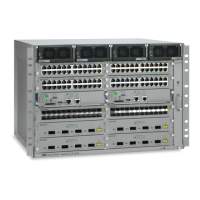
